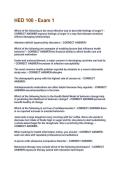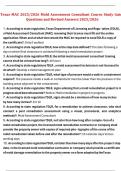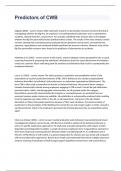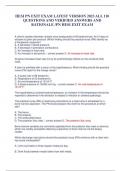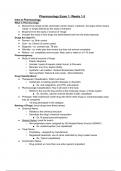1) North Western Europe
Summary of key points:
North Western Europe
Early Growth and Modernization:
Britain and the Netherlands benefited more from global trade as over the years they
developed institutions that better limited the power of kings which resulted in larger
share of the profits left for the merchant class and led to the little divergence
Development of the European marriage pattern meant that people would marry later in
life and allowed for development of skills prior to that. This allowed people to be more
productive and have less children both of which would raise wages in the long-run
Reformation led to higher investment in education which raised literacy rates and
helped in developing human capital
Two opposing views why Industrialisation happened in the UK: 1. Allen argues that it
was labour substitution due to high wages. 2. Mokyr argues that it was due to scientific
institutions and the experimentation of enterpreneurs
The Spread of the Industrial Revolution in the 19th Century:
After 1800 economic growth started to pick up due to diffusion of technology from the UK
to other parts of Europe. Areas of specialization depended on proto-industry and the
available resources. The development of better institutions after the Napoleonic wars
also could have played a role in the subsequent industrialization. This coupled with
falling transport costs and liberalization led to economic growth.
Different countries specialized in different commodities over this period.
Countries that were more willing to have agricultural tariffs had lower improvements in
their standards of living due to higher food prices.
The 20th Century Rollercoaster: 1914-45
Many countries were badly hit by WW1, while neutral nations somewhat benefited from
exports.
Countries that had weaker economies prior to 1929 did better after as they were quickly
forced off the gold standard and were able to devalue their currencies and therefore
increase exports.
The spread of electricity increased economic growth.
Rising popularity of social democratic parties laid the foundations of the welfare states.
Peace and Welfare: 1945-2010
, After WW2 there was substantial economic growth in Europe due to the new stability
which lasted until the oil crises.
There was big growth in the welfare state in many countries which helped reduce
inequality during the period.
EEC lowered cross-country tariffs encouraged liberalization.
The growing wages resulted in high inflation.
After the election of Thatcher, there was a policy reversal and more market-friendly
reforms were implemented that led to another period of growth which lasted until 2007.
More In depth Summary
Early Growth and Modernization:
- One of the main Questions is why the NW region became such an economic
powerhouse before the IR
- Before 1600, Ireland was the European powerhouse
- From the 13th and 14th centuries, Britain and the low countries begun to develop fastest
and after 1600 overshadowed the old meditteranean economic core
- Although Portugal and Spain were first to the Asian trade, Britain and Netherlands
profited more in the long run
- One reason for this is that there were better institutions that were ‘conductive to growth’
as they had a state that encouraged monopolies and chartered companies in the private
sector
- (Buringh and Bosker, 2012) discuss how previous medieval wars lead to different
institutional outcomes for England and Netherlands as they had institutions where
parliament has a more dominant power than elsewhere in Europe meaning there was
less power for the king. This small institutional divergence lead to a small economic
divergence in NW Europe
- In the late middle ages the European Marriage Pattern EMP emerged and caused a
further NW divergence
- The EMP is where in NW Europe, women and men selected each other voluntarily which
resulted in later marriage and more singles in the population. This meant that women
would have children later and would be able to increase the quality of their own skills so
they could earn higher wages. This lead to lower fertility as the opportunity cost of
children was higher and so the population did not increase as much and so wages
remained higher
- (Voigtlander and Voth, 2012) argue that this also lead to higher quality rather than
quantity of children leading into better quality human capital formation in the economy
- Capital markets also improved at this time with money being lended to houses at
reasonable interest rates (Van Zanden, De Moor and Zuijerduijn, 2012)
- There was also increased land market flexibility
- (Jan de Vries and Van der Woude, 1997) say that Netherlands was the first country to
undergo modern economic growth
- They say it started from the black death and ended at the start of the 19th C.
, - They say it was caused by increased literacy rates, human capital quality and the level
of human capital accumulation
- The Dutch East India Company was established in 1602 and was very successful with
trade and allowed the Netherlands to prosper
- This lead to increased trade between Asia, Europe and also to America via transatlantic
trade routes
- (Acemoglus et al, 2015) says that ‘it was the dynamic development of the Atlantic
economy that contributed to the rise of England as the new core of the World economy
after 1650’
- The Proceeds of growth had unequal distribution (Allen, 2001) and th Netherlands and
England became very unequal between the rich and the poor
- Although inequality was on the rise, there was still increased education levels shown by
literacy and numeracy rates
- The Industrial revolution that started in Britain was as a result of its urban sector, with
well developed markets and institutions that was aided by a highly skilled and productive
labour force
- (Allen, 2009) says it was as a result of labour substitution from capital that was aided by
low fuel costs such as coal and high wages
- (Mokyr, 2002) says that it was induced by enlightenment of entrepreneurs that
encouraged experimentation
- Industrial revolution was summarised by an increase in steam power, growth of the
factory system, increase of industrial employment and an expansion of industrial
exports.
- These all lead to rapid GDPpc growth
The Spread of the Industrial Revolution in the 19th Century:
- The Early 19th C. growth was special as it occurred not just in Britain but NW Europe as
a whole
- (Bolt and VanZanden, 2014) data shows that from 1500-1800 there was almost no GDP
growth until growth starts after 1800
- Growth was faster in NW Europe than the rest of Europe which lead to divergence up to
1870
- The new growth came with diffusion of technology across Europe starting with Belgium
followed by other Areas such as Germany, France Switzerland. This lead to
developments in the proto-industry
- The proto-industry was the foundation for the larger scale machine intensive industrial
revolution that would precede (Power moved from water to coal and steam)
- Areas with high levels of agricultural productivity such as in the Netherlands had less
incentive for structural change so industrial growth came later 1860
- An alternative interpretation of the growth was the ending of the Napoleonic wars which
lead to more stable political institutions that could facilitate economic growth in Europe
, - (Acemoglu et al, 2011) says that other policies such as a ‘highly rationalisable legal
system’ the ‘European state’ and policies to reduce transport costs lead to increased
trade through freeing international markets
- Steamships and train begun their expansion in 1830s which reduced transport costs
- Communication developments increased market integration
- Liberalisation of trade in 1850/60s and abolition of corn laws further increased market
integration and trade
- These factors all lead to ‘modern economic growth’ in NW Europe at the start of the 19th
C. based on British technology and French institutions
- Belgium profited the most throughout the 19th C. as it a small, open industrial export
lead country that competed with Britain
- Denmark also profited through becoming a leading agricultural export lead economy and
through internal industrial developments
- (Maddison, 2001) states that both Denmark and Belgium saw GDPpc increase threefold
- UK and Netherlands started the 19th C. with the highest real incomes and also saw
GDPpc double
- (O’Grada, 1995) discusses how a famine in 1845-47 lead to outward migration in Ireland
to USA which declined the population resulting in higher GDPpc
- France had a lower GDPpc at the start of the 19th C.
- (Hoffman, 2003) says that this lower starting point for France was caused by higher
transaction costs that did not help economic growth and were made worse through
fragmented property rights
- During the 19th C. France modernized its institutions and invested in schooling causing
a GDPpc convergence with britain by the end of the century
- Another key event was the ‘catching up’ of Scandanavian countries caused by two main
factors. High levels of human capital formation and democratic institutions
- Democratic institutions existed through persistence of the ‘Era of Liberty’ in 1719-72
- Denmark specialised in agricultural exports, Norway developed through shipping,
Sweden developed into an industrial economy and Finland exploited its timber
resources.
- Finland was strictly by harvest failure in 1867- 68 which prevented growth (Hjerppe,
1989)
- (O’Rourke and Williamson, 1999) said that this region benefited from globalisation that
lead to migration inflows of skilled workers
- International trade with the Scandanavian region and Britain grew and continued
- After 1870, German economy grew at a faster rate than Britain
- Globalisation and falling transport costs converged transatlantic wages and prices
between Europe and America
- (Tracy, 1989) says that Netherlands and Britain committed to free trade policies which
was different to the rest of Europe and helped facilitate growth as their industrial sectors
did not need protecting
- Cheap imports of food and rapid industrial growth lead to increased standards of living
for NW Europe



